



THE TRADITIONAL MUSIC & DANCE
OF
THE EELAM TAMILS
By Balasugumar, January 8, 2009
The Tamils of Eelam, just like any other sect or community of people have their own, exclusive History and Culture. The Eelam Tamils who have the rich tradition of many centuries of ancience and the great expanse and continuance of the modern Cultures and Traditions have scattered all over the world and are living in different parts of the Globe. We can very well say that .today there is no country under the Sun uninhabited by the Eelam Tamils. So expansive their global space has come to be. Yet, we should realize the fact that the Eelam Tamils have to face some unavoidable identity-crisis in the international arena.
What are the Music and Dance traditions that have been nurtured and preserved by the Eelam Tamils so far? In the public space what are being learnt and practised more, by our people, as the exclusive identity of our Culture and Tradition? The Carnatic Music and Bharatha Natyam have so far been rendered by our people with great depth and finesse, with an exemplary passion and perfection.
In such a backdrop we are to ponder over and contemplate on the traditional Music and Dance forms of Eelam Tamils. The basic elements of Music which are ‘Oththisai(Harmony),Ozhungu( Order), Ragam(Raga) etc., would vary from one Culture to another. In each group or society this would have its own exclusive and unique elements.
The community of Eelam Tamils too is endowed with its own distinct and unique Music Tradition and several distinct features. When it comes to Tradition and Culture, though the Eelam Tamils have got .close associations and several basic similarities with Tamil Nadu the Eelam Tamil community has got several other cultural identities distinctly unique. And, in them Music and Dance remain an important narrative style. Music has been an integral part of the Eelam Tamils’ life, and centering round their beliefs and blending harmoniously with the rituals and customs of the countryside, at the same time gong beyond them it has a close association with the life-style of the people. We can find in our traditional music an unbroken continuance of the tradition of ‘Thamizisai’.
Here we have to keep in mind the fact that the basis for Vipulanandha’s Yaaznool was but the influence of the tradition of Music on the Eelam Tamils which in turn is based on their Tradition and Culture. The sweet lyrics of Kannagi that he used to hear when he was young, the songs of Vasanthan(Vasanthan Paadalgal), the Music of Koothu(street-play) formed the basis for his research on Music.
We can also observe the way this traditional Music is being learnt till date in the traditional home-lands of the Eelam-Tamils, the Northern and the Eastern regions
Though the Sinhalese community in Sri Lanka had association with the North-Indian tradition of Music the Sinhalese nationalist uprising that had taken place after the 60s began to develop their own constructs of cultural identities. Their hues and shades, poetry and different folklores formed the basis for today’s traditional music.
We can quote such names as Amaradeva, Premadasa as heirs to this tradition. But, the music- traditions of the Eelam Tamils have not yet been formalized or standardized but they continue to be in vogue as the Music of the Masses. Professor Vidhyanandhan had undertaken several initiatives for the resurgence of the traditional Music of Eelam. And, as a result of his untiring efforts, with the assistance and support of the Broadcasting Corporation of Sri Lanka a cassette on the Eelam Tamils’ Traditional Forms of Music was released. But, this initiative of his ended with the release of the said cassette. It was not taken forward to the next stage.
Later on, that is, in the second half of the 90s the Department of fine Arts of Eastern University included the Study of Eelam’s Music-Tradition in the syllabus. And, in all the important cultural and other events of the University and also in general events, in television programmes the significance and continuance of the Music tradition were highlighted and elaborated. In particular, the musical events such as Kannagi Kulirthi, Kizhakkisai, Layam have contributed significantly by providing the basis for the continuance and resurgence of the Traditional Music of the Eelam Tamils.
In the same way Thirumarai Kala Mandram have performed Koothupaadalgal( songs of street-plays) and Isai –Naadagap paadalgal(songs of Dance-drama) and Vasanthan paadalgal and in recent times have released audio-video C.Ds of them and so have documented them.
02. that which we can iidentify as the distinct and exclusive musical traditions of the Eelam Tamils are listed below: KARAGAM, KUMMI, MAZHAIK-KAAVIYAM, OPPAARI, VAYAL-PAADALGAL, AMBAA PAADALGAL, KAVI, OONJAL PAADALGAL, KULIRTHTHI PAADALGAL, UDUKKADI KAAVIYAM, KAATHAVARAAYAN PAADALGAL, KOVALAN KADHAI PAADALGAL, KANNAGI VAZHAKKURAI, MAARIYAMMAN NADAI, MANDHIRA UCHAADANA MURAIGAL, KOOTHISAIP-PAADALGAL, AATTAKKAAVADI ISAI, VEDIKKAIP-PAADALGAL, ISLAAMIYARIN KALYAANAP-PAADALGAL, FAKKIR PAADALGAL, SONGS ON THE CHRISTIANS’ SUFFERINGS ON THE CROSS – and the list would be endless. This Tradition of Music and its various branches have their own distinct and unique synchronizations of Tala and Raga. The musical instruments that form an integral part of this Tradition of Music are very important.
UDUKKU : Udukku is of two varieties. The big one called ‘Venkal Udukku’ and the other variety made of wood called ‘Mara Udukku or the Udukku made of joining the coconut-shells.
PARA-MELAM: In Para-Melam also we can observe two varieties. The two different varieties referred to in the Sangam Literature, - ‘Siru-Parai(the small one) and the Perum-Parai can be seen in Eelam also. The musical instrument called ‘Sornaali’ which comes along with the Parai as a wind-accompaniment holds an important place in the Music Traditions of Eelam. Thalam which is called Sallari, Silambu, Thaalamaangaai, Mathalam, Kottu, Sangu – so we can categorize them and understand their roles in the Music-Traditions of Eelam.
Today we have our own Musicians and Maestros. But, we regard Carnatic Music as our Music-Tradition and teach it to our students. We have forgotten the Music-Traditions of Eelam which is sad indeed. This sad state of affairs should not continue. We who learn mere Telugu Keerthanaas alone should teach our future generations our own distinct Music Traditions. The Tamil Educational Institutions in the lands of migration should pay utmost attention to this factor. Further, our Universities too should come forward to pay more attention to this serious lapse and work towards including this subject also in the curricula of Schools and colleges. The Eelam Tamils who actively work in the lands of migration for the uplift and betterment of their fellow-beings can and should contribute significantly towards this cause.
03. When we speak of the traditional dance of Eelam Tamils we should take into consideration the tradition of Koothu which has been continuously in vogue for the past two thousand years. Koothu is the Tamil word for dance. In course of time the influence of Sanskrit has brought into force the word Nadanam from the root-word in Sanskrit – ‘Nat’ and this word has come to be used as Tamil term itself in our daily usage today. The Dance-Tradition of the Eelam Tamils is one of the core elements of their Cultural construct. For a human race to be taken note of and referred to, its own distinct and exclusive cultural identities are important. That too, the various forms of dance and drama hold a special place in the uniqueness of a Culture. And, for centuries together the traditional methods of dancing of the Eelam Tamils have been cherished and nourished far and wide in the various forms of Koothu in places inhabited by the Eelem Tamils such as Yaazpaanam, Mannaar, Mattakalappu, Trincomalee, Vanni etc.
PARAIMELA KOOTHU: This is wide-spread in Mattakalappu. In this there is just dance alone and no songs. In this dance-tradition the drummers who play the ‘parai’ accompanying the music produced by the combination of the instruments Sornaali, Parai and the Silambu. The findings of several research-studies hold that the source of the dance-form called Kandian Dance which is popular among the Sinhalese has come from this Paraimela-Koothu.
VASANTHAN KOOTHU: In this dance-form which is a fine blend of song and dance, there won’t have any characters and the story would be unfolded through the dance. This dance-form in which mostly boys take part would reveal a variety of postures and styles. Though the narrative style of telling a tale is of prime importance here, it is dance that is predominantly revealed in this koothu.
MAGIDIK-KOOTHU: Though this form is also a fine blend of story, song and music in this we can come across the combined efforts of different styles of dance and music. VADAMOEDI, THENMOEDI, VASANTHAN and the details that have come to be find a place in Music in the later years – so we can see the combination of all these and more..
MANNAAR KOOTHUGAL : there are two traditions in this called VADA PAANGU, THEN PAANGU ( meaning the Style of the North and the Style of the South). That which is known as Vada Paangu reveal the tradition of Yaazhpaanam and the Then Paangu reveals that of Maathoetta tradition, In these Koothu forms dance has a minimal place and it is the songs that play a predominant role. Yet, the arrival of the characters ‘Tharu’ and such others would reveal wonderful dance-forms.
YAAZHPAANAK-KOOTHUGAL: The tradition that was in vogue in Vattukottai and Uduppitti regions having close resemblance to those of the Vadamodi, the Koothu-forms practised in the coastal areas have close resemblance of the Thenmodi. At the same time we can join the Kathavaraaayan Sindhunadai Koothu also with the tradition of Yaazhpaanam.
VANNIK-KOOTHUGAL: Here the Kaathavaraayan Koothu and Kovalan Koothu gain importance. The Kaathavaraayan-Koothu contains Sindhu-Nadai, a lilting quality and a unique Music-Tradition. The Kovalan Koothu is a form of dance that has the semblance of the Thenmodi of Mattakalappu.
THE KOOTHU FORMS OF VADAMODI AND THENKMODI: We can have the Vadamoedi and Thenmoedi Koothu forms alone as the classical forms belonging to the classical tradition of the Eelam Tamils. In particular, the Koothu-forms performed in Mattakalappu have these characteristics and featres. This is the reason why Professor Vidhyanandhan who was involved in renewing the traditional Koothu-forms staged the Matakalappu Koothu-forms in the University of Peraadhanai. In Music as well as in dance the two Modis have significant differences. The koothu forms of Vadamoedi are more minutely shaped than the koothu forms of Thenmoedi. Vadamoedi koothu-forms have elegance and beauty. In the koothu-forms of Thenmoedi the songs would be sung in a dragging manner while in Vadamoedi the actor would read the ‘Thampaatu’ and the accompanying musician would finish singing it. In Thenmodi the last portion alone would be sung by the accompanying musician and then he would sing the ‘Tharu’ for the entire song. When each and every character appears on the stage they would play different ‘thaalaas on their drums(Mathalam). When those ‘thaalaas’ would be recited that would be called ‘Padhavarisai Thaalakkattu. The way the Thaalaas for the dance would be woven with the help of alignments of words is known as Thaalakattu. Annaaviyaar would recite this Thalakattu repeatedly, during the arrival of the characters on stage. Eight times, twelve times – so, according to the mood of the Annaaviyaar the number of times would vary. These Thalakkattugal would be different for male and female characters and also they would reflect the distinct differences among the characters. The Thalakkattugal exclusive for men would be on the line of ULAA, PODIYADI, VEESAANAM, ETTU, NAALADI, KUTHUMIDHI, PAACHAL. The Thalakkattugal for womenfolk would be in the order of OYYAARAM, PODIYADI. VEESAANAM, ETTU, THATTADI, ADANDHAI, KUTHUNILAI. The skill, expertise and beauty of the dance-forms of Vadamoedi would be revealed through the footsteps and bhavas that would be unfolded in this Thalakkattu. It is the dances of these Thalakkattu that lend life and beauty to Vadamoedi and Thenmoedi. It is these dances that distinctly differentiate them from other dance-forms and thy also enable them to attain their due artistic value and Classical nature.
O4. Today we can find the basic features for the formation of a Theory on the Traditional Dance of the Eelam Tamils, in the Vadamoedi and Thenmoedi dance-forms. Therefore, keeping this as the basis we have been continuing the initiatives of Professor Vidhyanandhan, from where he had stopped, for the past several years. It should be mentioned here that Professor C.Mounaguru has been a pillar of support and a catalyst to our initiatives. This worthwhile initiative which was given a shape at the Eastern University’s Festival of Drama that took place in the year 1998 has gained a final, complete form in 1999, at the University’s Convocation Ceremony.
And, since then, as a continuation of the initiative ‘Inniyam’ is being used in all the convocation ceremonies of the Eastern University. Inniyam can be called the Order and Alignment of the traditional Music and Dance forms of the Eelam Tamils. Such a compilation of the traditional forms of Music and Dance which highlight the exclusive cultural identity of the Eelam Tamils is the need of the hour in the lands of our migration. Realizing this need, in January 2008, on the auspicious day of the Festival of Pongal, ‘Inniya Ani’ was introduced.
Under the guidance of the Forum called Silambu in France this ‘Thamizhar Thirunaal’, as a combined initiative of various Organizations of the Tamils, was celebrated. Thus, we can say that it is France which laid the foundation for Inniya Ani in a foreign soil, a land of migration. In this I introduced Inniya Ani, creating a dance-drama with the help of Anusha, who teaches Dance, and her students.
In carrying forward this concept of the Traditional Music and Dance forms of the Eelam Tamils into a Theory and introducing it in the lands of migration the contribution of K.P. Aravindhan who was one of the Co-ordinators of the Festival of Thamizhar Thirunaal and that of K.Mugundhan, the secretary of the Forum called Silambu have been very significant and their efforts need especial mention here.
Following that, in the Tamil month of Vaikaasi 2008, in the Festival of the Traditional sports and Games of the Tamils organized by the Thames Thamizh Sangam in London Inniyam was introduced. The Tamil students living in London participated in it. This was possible because of the great efforts of Thiru. Varan and Thiru.Seelan. And, in continuation of this, Inniyam is going to be introduced in the Festival of Pongal that is to be celebrated in Norway, in the year 2009. More or less 50 students are taking part in it. The Norway Thamizharvala Nilayam is organizing this Event. In this, the efforts of Thiru Baskaran and the team of teacher Malliga need especial mention.
In this background, the efforts to include the unique features of the tradition of Koothu that was performed throughout the night, extending till the dawn of the next day, and so design and construct the Dance of Eelam Tamils is in the offing. In Norway, as part of the 15th Anniversary celebrations of the noteworthy Dancer Thirumathy Malathy’s School of Dance(08.11.2008) this amalgamation bore a concrete shape on stage, under my direction. More than 20 students performed the Vadamoedi’s Dance called ‘Arasa Varavu(The arrival of the Monarch) on the stage. This was a milestone event when a Bharatha Natyam School staged the Koothu-based Dance of the Eelam Tamils for the first time. This is indeed a historical event.
As the next stage of this evolution Koothu was included as an ‘item’ in the Arangetram session of Bharatha Natyam. This miracle too happened in Norway itself. Raghavi, the student of the Bharatha Natyam teacher Mercy performed this miraculous feat. This is also the first ever, path-breaking event in the entire world which is a very important historical event.
Along with these initiatives, in Norway the Traditional Koothu of Eelam Tamils is going to be included in the curriculam of an Educational Institution run by the Government of Norway. Thirumathi Vaasugi Jayabalan is in-charge of this venture. In London also, the students of the dance-teacher Thirumathi Ragini introduced Koothu as the traditional dance-form of the Eelam Tamils, in the Annual Day Celebrations of their Dance School.
We can say with confidence that the seeds of the traditional dance-form of Eelam, its shape and hues have come to be sown, both in theory and practice, in the lands of our migration. But, for the consummation of this process and for giving a distinct, wholesome shape and identity to the Traditional Dance of Eelam, we have to go a long way. Let us join hands in realizing this crucial objective of establishing, against all odds, our Cultural Identity in the international arena

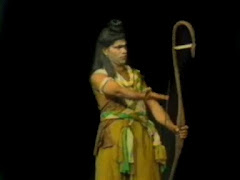.bmp)


%5B1%5D.jpg)




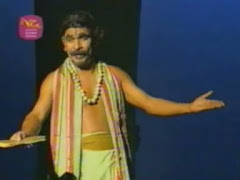.bmp)
.bmp)
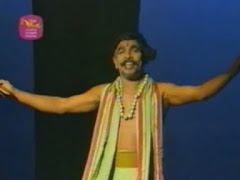.bmp)
.bmp)
.bmp)
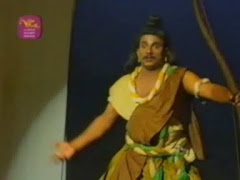.bmp)
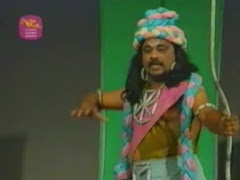.bmp)
.bmp)
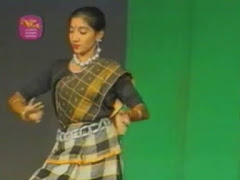.bmp)
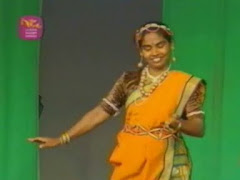.bmp)
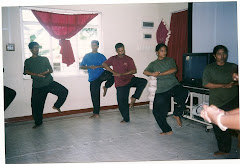.jpg)


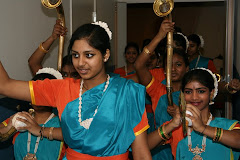
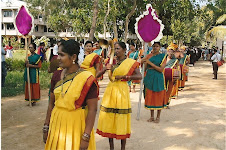.jpg)
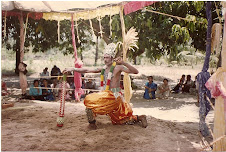.jpg)
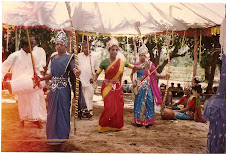.jpg)
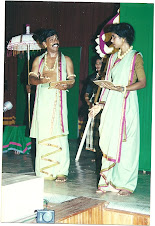.jpg)
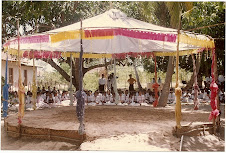.jpg)
.jpg)

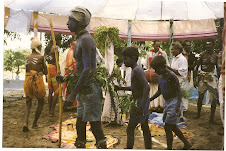.jpg)


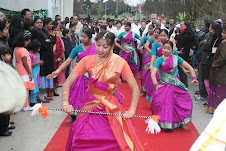





.jpg)



No comments:
Post a Comment